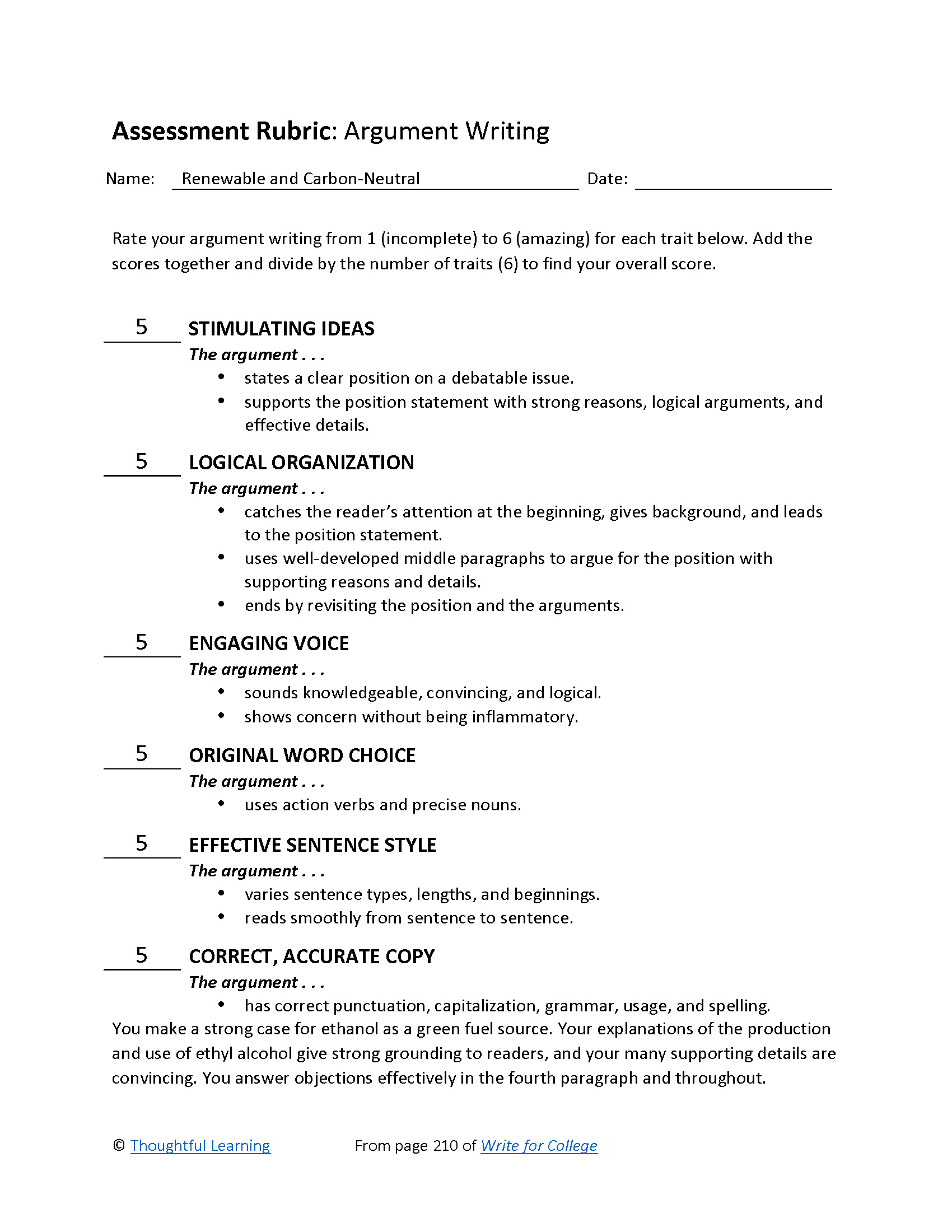Student Model
Renewable and Carbon-Neutral
“Truth will rise above falsehood as oil above water”—Miguel de CervantesKatrina, Harvey, Maria, Sandy, Irma . . . what do these storms have in common? They are the five costliest ever to strike the United States, altogether causing nearly half a trillion dollars in damage ("New List"). And all happened since 2005. More intense storms come from warmer oceans—one of many negative results of climate change. Greenhouse gases from fossil fuels increase the atmosphere's ability to trap heat from the sun, but humans can't just stop burning fuels to create energy. After all, the discovery of fire lifted us above the other species on the planet. However, a renewable, carbon-neutral energy source awaits us in the center of our nation. Ethanol produced from corn can improve U.S. energy independence in a quick and cost-effective way, despite the misinformation generated about it.
As a clean alternative to fossil fuels, ethanol can lessen the United States’ oil addiction. In fact, ethanol was the fuel of choice at the beginning of the automobile revolution, used in 1908 in Henry Ford’s Model T. Ford used ethanol because of its superior performance, which remains true today: “Ethanol works well in all modern cars and is already found in 97 percent of our fuel. It has the highest blending octane of available additives, which keeps your engines running cooler and cleaner, while improving engine performance” ("Grow"). Today, 28 states offer E15 gasoline, which means it contains a 15 percent ethanol mix mandated by the government to eliminate some carbon emissions. According to the U.S. Energy Information Administration, "ethanol is considered atmospheric carbon-neutral because corn and sugarcane, the two major feedstocks for fuel ethanol production, absorb carbon dioxide as they grow and may offset the carbon-dioxide produced when ethanol is made and burned" ("Biofuels"). In fact, the whole plant from root to tip traps carbon, not just the corn or cane, helping to offset whatever fossil fuels are used to grow and ferment the plant. And some operations use ethanol themselves instead of fossil fuels, reducing the carbon impact further. The U.S. Department of Energy states that, “Ethanol has a positive energy balance—that is, the energy content of ethanol is greater than the fossil energy used to produce it—and this balance is constantly improving with new technologies” ("Ethanol Myths").
Ethanol provides the quickest, most cost-effective option for green energy for cars. Solar cars work well in sunny climates like Arizona but less well in cloudy ones like Wisconsin. Electric cars have a limited range (about 100 miles). They can function well in densely populated costal areas with many charging stations, but the vast expanses in the middle of the country are out of reach. Also, both solar and electric cars require large batteries that are themselves bad for the environment. The batteries and other technologies in these cars make them quite expensive. However, Americans can switch to ethanol without buying new, expensive cars. Some would argue that ethanol is harmful to engines or not compatible with their cars. The truth is that most cars can already use straight ethanol. Cars labeled “Flex Fuel” can already take ethanol instead of gasoline for fuel. Even most cars without this label can still use ethanol. The only reason a car would not be able to take ethyl alcohol is because the car’s creators have built in a program to reject it. Many car companies work with oil companies to make sure ethanol isn’t used.
Despite ethanol’s many positives, the Department of Energy reports that only 41 percent of Americans have a positive view of it ("Ethanol"). This is because many Americans believe in myths spread by large oil companies to hurt ethanol production. One company working to stamp out ethyl alcohol is Koch Industries. The Koch Brothers released an ad saying, “Ethanol nearly doubles greenhouse emissions—Science” (“End”). Though Koch Industries believe they have “science” on their side, the Renewable Fuels Association states that “The 14.3 billion gallons of ethanol produced in 2014 reduced GHG emissions by 39.6 million metric tons—equivalent to removing 8.4 million cars from the road” (“Going Global” 8). In addition, misinformation campaigns indicated that increased production of ethanol raised the price of corn, causing food prices to rise. However, ethyl alcohol actually comes from yellow field corn, which is not a human food. Ironically, rise in oil prices and increasing droughts across the globe—both conditions related to fossil fuel consumption—played significant roles in the rise of food prices, while ethanol production did not. Senator Chuck Grassley stated, "This campaign against ethanol is more sophisticated than anything I have seen put on by big oil over the last 30 years, as big oil has been a constant fighter" ("Ethanol Smear"). Despite all of the attack ads and fake science articles, the science that is not paid for by industry makes the case for ethanol clear.
Ethanol provides one solid strategy for combating climate change. Renewable and carbon-neutral, ethanol can greenly power our vehicles without requiring huge changes in the motor industry. We can switch to ethanol today. We can grow our own energy, power our farm economies, and slow the effects of climate change. We can choose global interests over special interests. The United States is already the number one producer of ethanol. Changing the ethanol standard from E15 to E85 or E100 could mean the difference for the world.
Note: The works-cited list is not shown.

Rubric


Renewable and Carbon-Neutral by Thoughtful Learning is licensed under a Creative Commons Attribution-NonCommercial-ShareAlike 4.0 International License.
Based on a work at k12.thoughtfullearning.com/assessmentmodels/renewable-and-carbon-neutral.